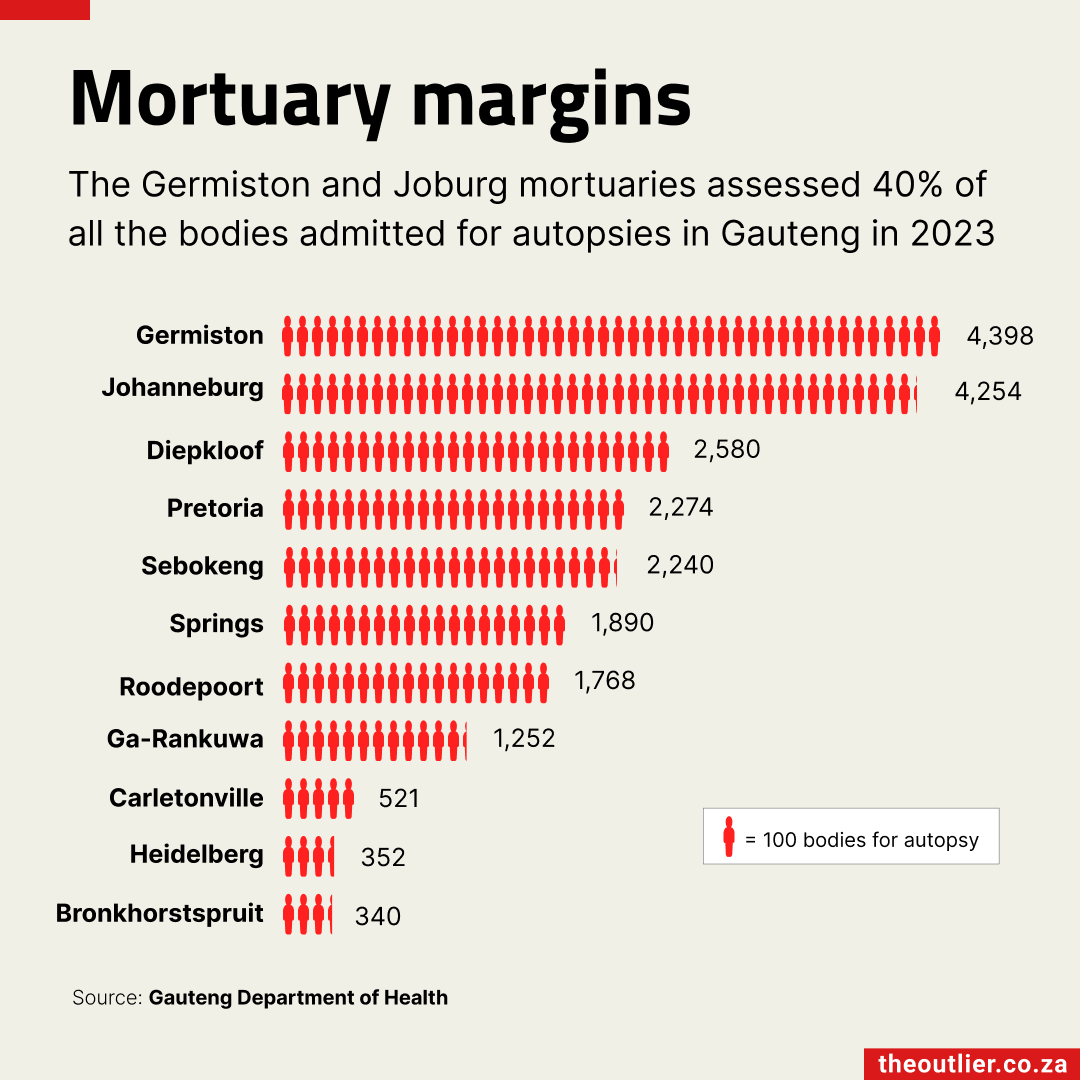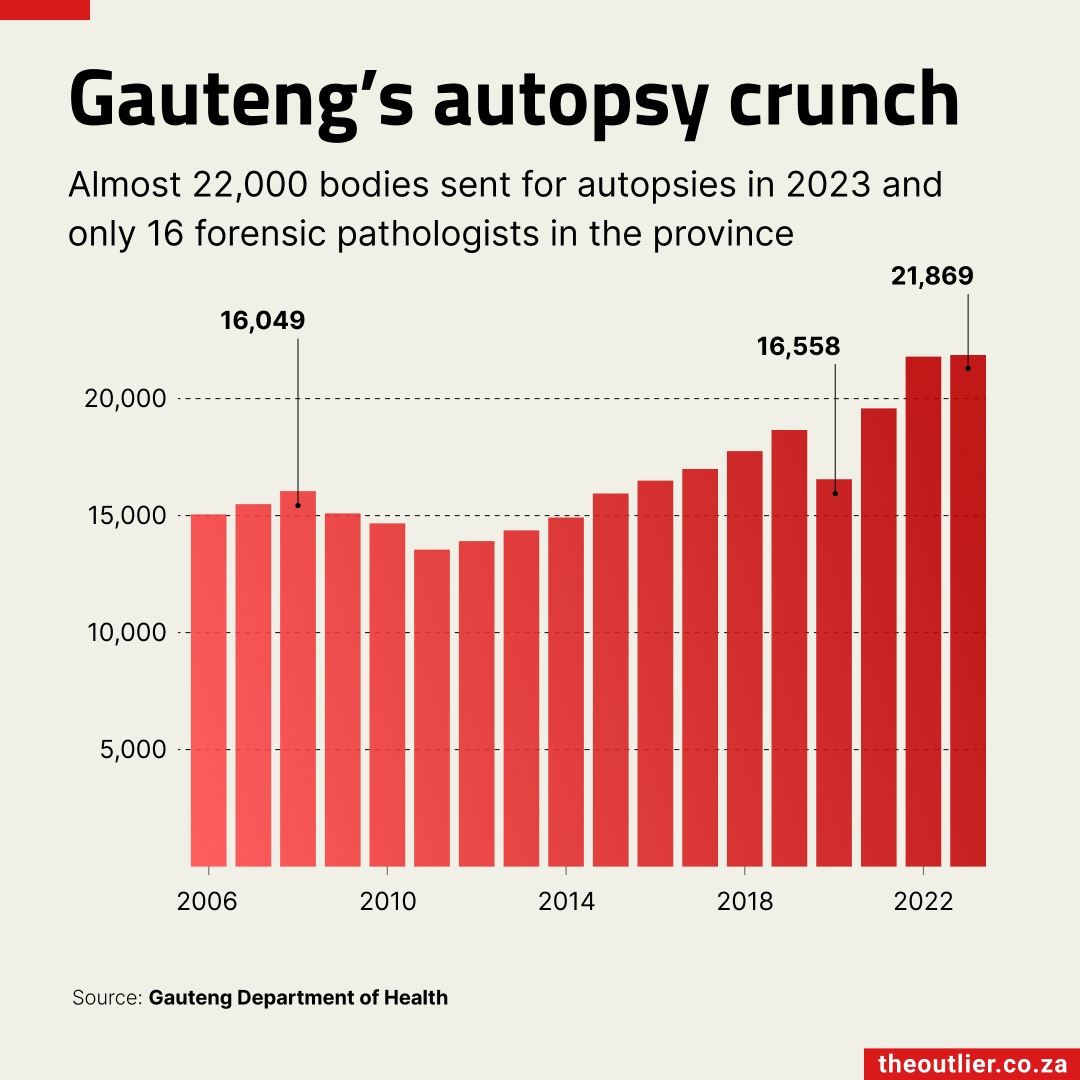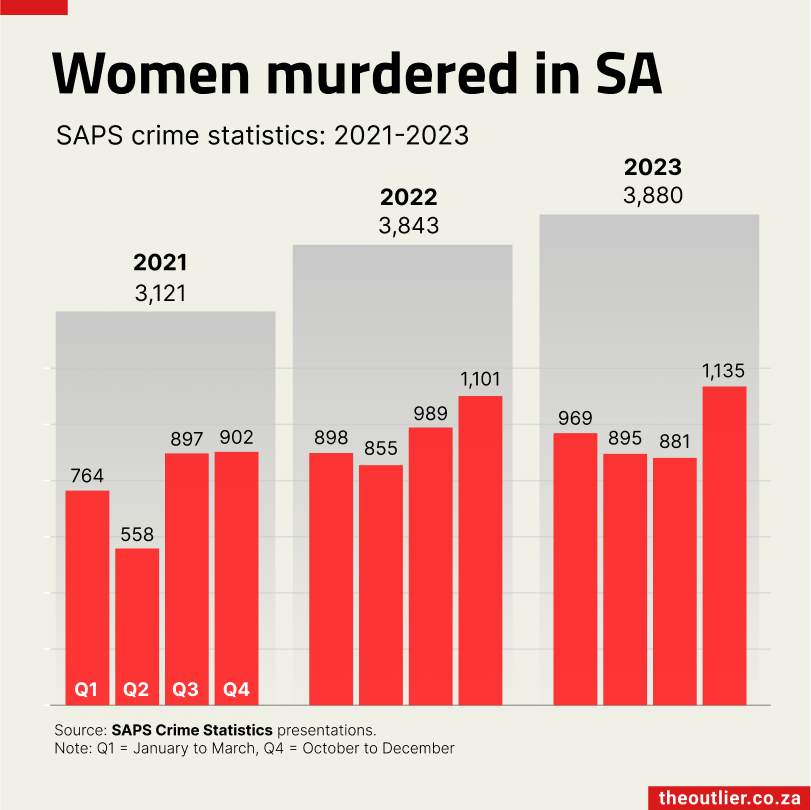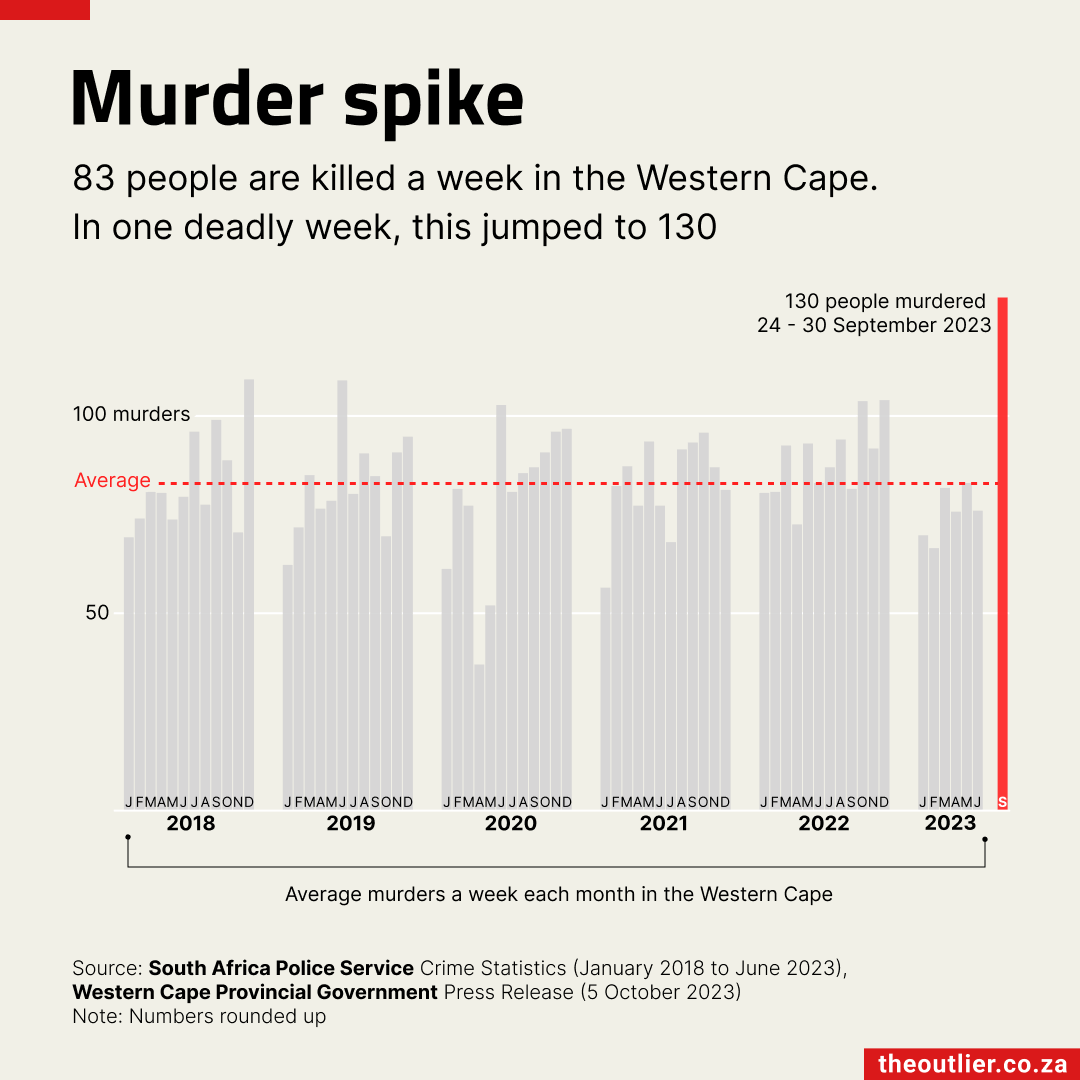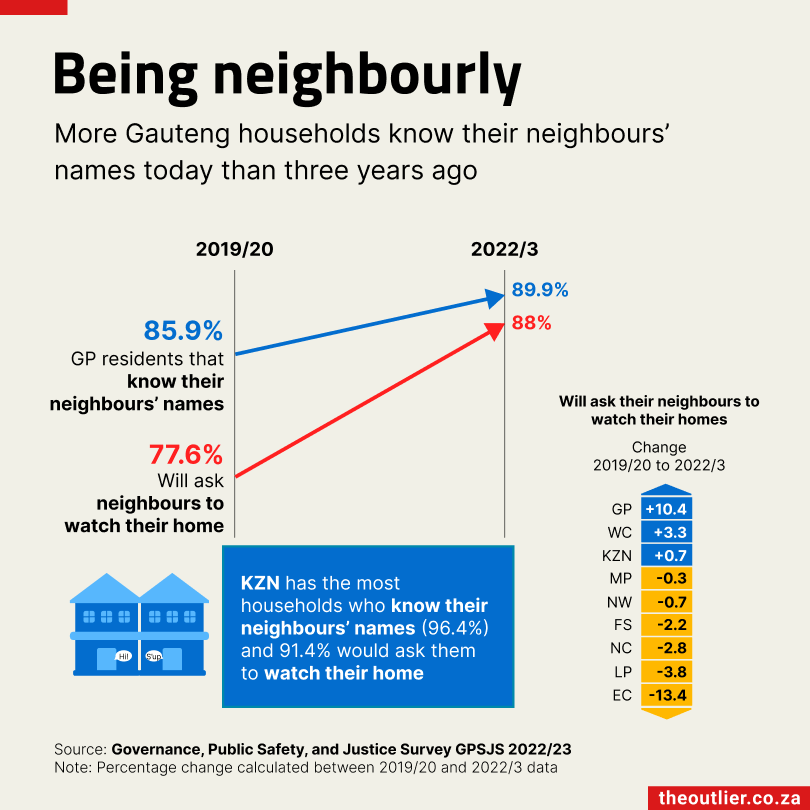Women murders in SA: Filling in the details
The number of women being killed is rising. Data we’ve collected for the past 5 years gives insight into who these women were and what happened to them.
Photo: UN Women, Flickr
- Almost 11 women are murdered every day in South Africa, according to the SA Police Service
- Data based on media reports show more than a third killed by a current or former intimate partner
- Shooting is the primary cause of death of women killed in South Africa
The murder rate for women has increased from 10 murders per 100,000 women in 2021 to 13 per 100,000 in 2023, according to the latest crime statistics released by the SA Police Service.
- 3,121 women were reported killed in 2021, an average of 8.6 women a day
- In 2023 that number increased to 3,880, an average of 10.6 women a day
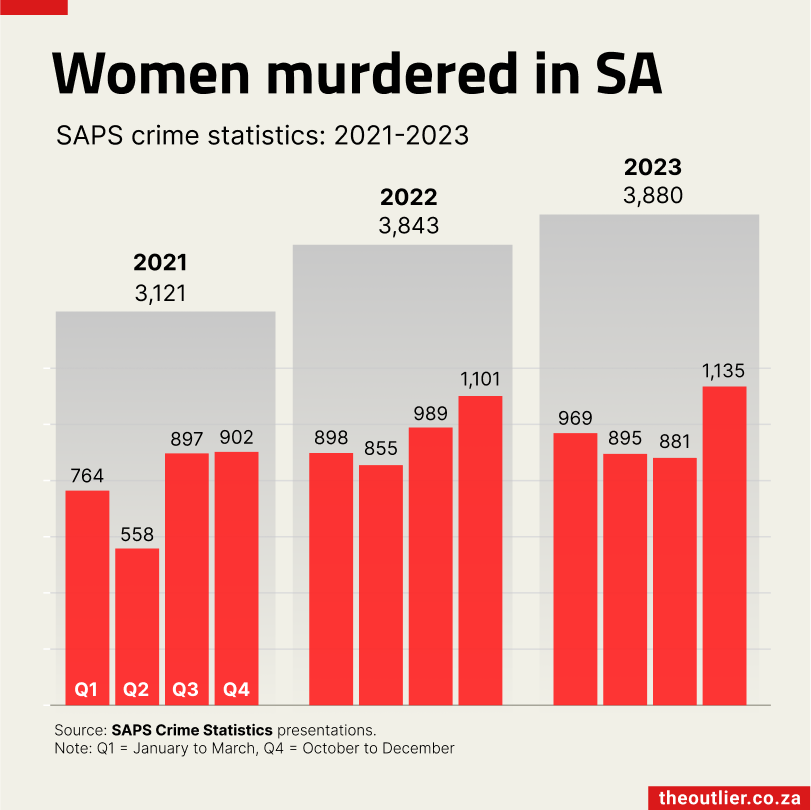
Who are the victims?
Because the official data is low on detail beyond the number of women killed, The Outlier has been collecting media reports of murders for the past 5 years. Although the number of cases recorded is small in comparison to the total number of women killed in the same period, the 1,187 cases do provide some insights into who these women were and what happened to them.
They knew their killers: Half of the women knew their killer and many were killed by a current (27%) or former (5%) intimate partner. This is very much in line with international patterns (see below).
Most were under 40 years old: Of the cases in which the age of the victim was reported (1,007), 66% were under the age of 40 and 18% were under 20 years of age.
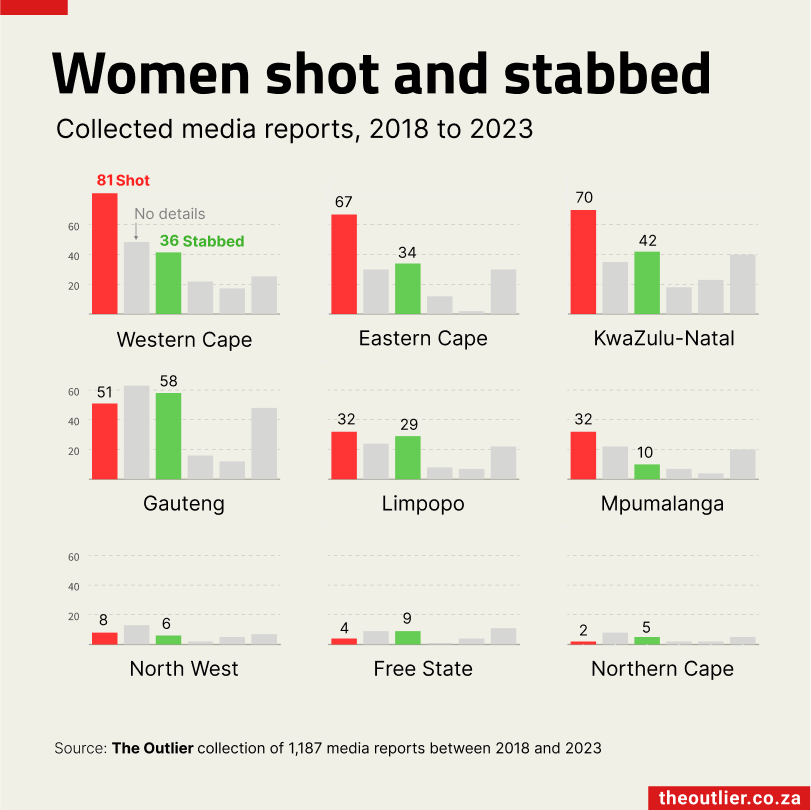
An increasing proportion of victims were shot: What we also see is that of the more than 1,100 cases in our dataset, almost 30% of the victims were shot and another 19% were stabbed.
Based on the media reports we have collected, shooting is particularly high in the Western Cape, Eastern Cape and KwaZulu-Natal. Both the Western Cape and KwaZulu-Natal had noticeable increases in shootings over the past two years, but 2023 stands out in the Eastern Cape for the increase in shooting deaths. The Eastern Cape shootings are something of an outlier though, boosted by a number of mass killings in the province.
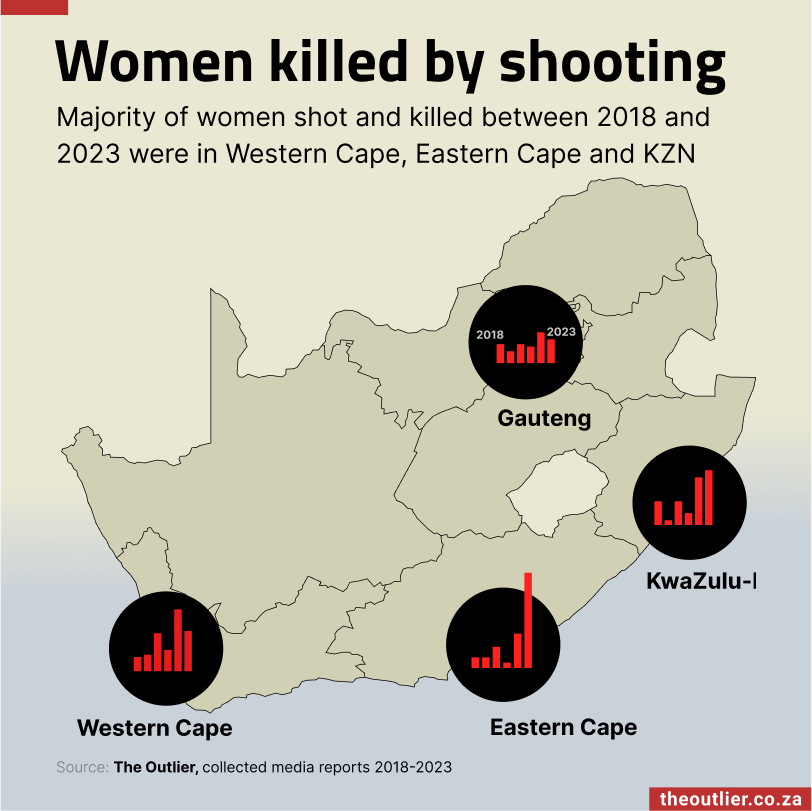
International trends
The number of female homicides globally is increasing: 2022 had the highest number in the past 20 years, the UN Office on Drugs and Crime said in a report published in 2023. Also notable was that Africa had the largest number of victims for the first time since 2013.
Even though far more men are murdered than women every year, women and girls are ‘disproportionately affected by homicidal violence in the home’, the report said. 55% of female homicide victims are killed by someone in their family or their intimate partners, compared with 12% of male murder victims.
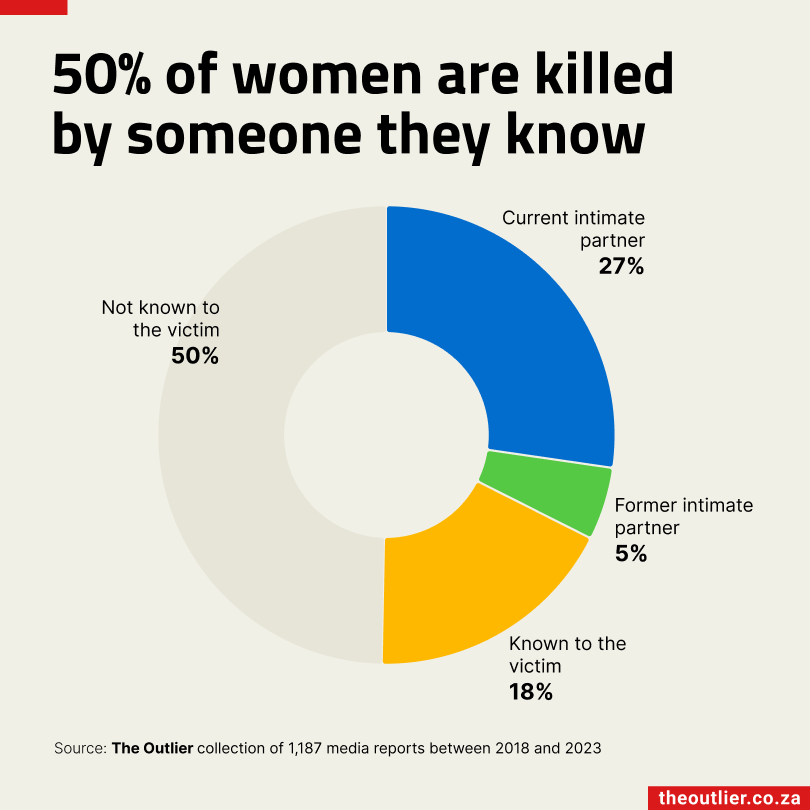
The majority of intentional homicides of women and girls are gender-related – or femicide – the report states. These can be driven by social norms about masculinity and men’s entitlement over women, but often there isn’t enough information about murder cases to identify what motivated them.
That is the case in South Africa. The Gender & Health Research Unit of the SA Medical Research Council, which has been studying female homicides for more than 20 years, supplements police crime stats with data from mortuaries and autopsy reports as well as interviews with police investigators and case files.
Its latest report, published in 2022, compares femicide rates in 1999, 2009 and 2017 and found a consistent decline in female homicide and intimate partner murders: 2,407 women over the age of 14 were killed in 2017, down from 3,793 in 1999.
The police crime stats for 2023, which include female victims of 18 years and older, report 3,880 murders. The numbers are rising again.
Data collection notes
Collecting data about women murdered in South Africa started as part of the #SayHerName project The Outlier did with the Bhekisisa Centre for Health Journalism in 2021.
The data used in this report is drawn from media reports of women killed in South Africa between 1 January 2018 and 31 December 2023. We sourced the data from English-medium online posts from local and national news websites in an accessible format. 1,187 reports were collected during this time.
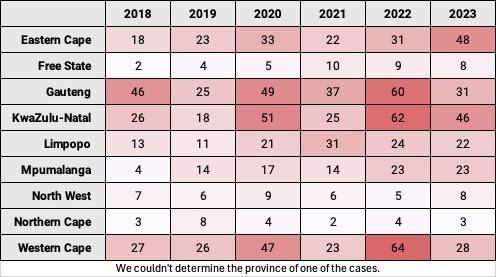
Notebook
- #SayHerName: The faces of South Africa’s femicide epidemic – an Outlier project with Bhekisisia Centre for Health Journalism
- UN Office on Drugs and Crime’s Gender-related killings of women and girls [PDF]
- Gender & Health Research Unit of the SA Medical Research Council’s research brief on femicide in South Africa [PDF]

